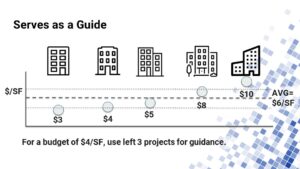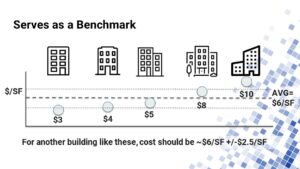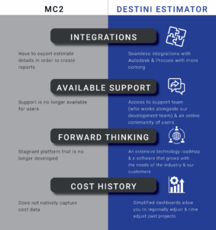Benchmarking in Preconstruction
As preconstruction professionals, we know that early collaboration with owners drastically reduces risks on a project. We also know that it significantly decreases the number of change orders. Owners who are picking up on this are now seeing that preconstruction teams can help them receive the best work for their budget.
As a project moves from estimate to estimate and down the design stages, there is more certainty of what a project will look like, but it might be months or even years later that we nail down a set of plans of what is going to be built. Historically, our industry has focused on capturing data at the beginning of a project, and not so much at the end of one. And if you have, it’s probably been an extra step. Capturing these historical costs is a high-level activity that all estimators want to do but rarely have the bandwidth to perform.
We have an enormous opportunity to make preconstruction better than it is today. Accessing this historical data would create the time needed for high-value activities. Instead of starting a project with nothing, we would at least have the history of a similar project. For example, you can have the ability to dissect the concrete frame or the mechanical system. We build the same types of projects, so why can't computers make suggestions based on our history? One very notable high-value activity that we can use cost history for is benchmarking.
What is Benchmarking?
Benchmarking is the process of analyzing the estimated costs of a project in comparison to similar projects.
With benchmarking, an estimator can compare similar projects or a group of components across multiple projects. At the annual Advancing Preconstruction conference, Greg O’Bryan, Preconstruction Manager at The Beck Group, shared how The Beck Group utilizes cost history to benchmark its estimates. For example, if you have the data for the price per square foot of five similar office buildings, you can use this historical data to find the cost for a sixth building.

Referring to Greg’s illustration above, if your building was four dollars per square foot then the three buildings on the left in the diagram would be useful. However, the two on the right would only be useful for what we do not want to do. You can use benchmarking for what you want to do versus what you don’t want to do. It works both ways.

Benchmarking allows you to analyze the entire project or gets as granular as comparing a block of CMU or a two-by-four. It also allows you to give context to non-cost information like those things not embedded in line items. The Beck Group uses it to see how a project tracks, trends, and changes so they can provide “cost certainty” and “cost stability” to owners.
You can’t benchmark without capturing historical cost data. If you don’t have a tool or process to help capture your data, as mentioned above, extra time and resources are used after the project is completed to log the data. In the rare cases this information is stored, as Beck Technology President, Stewart Carroll says, it usually “falls off the vine.”

-1.png?width=112&height=112&name=image%20(4)-1.png)

















